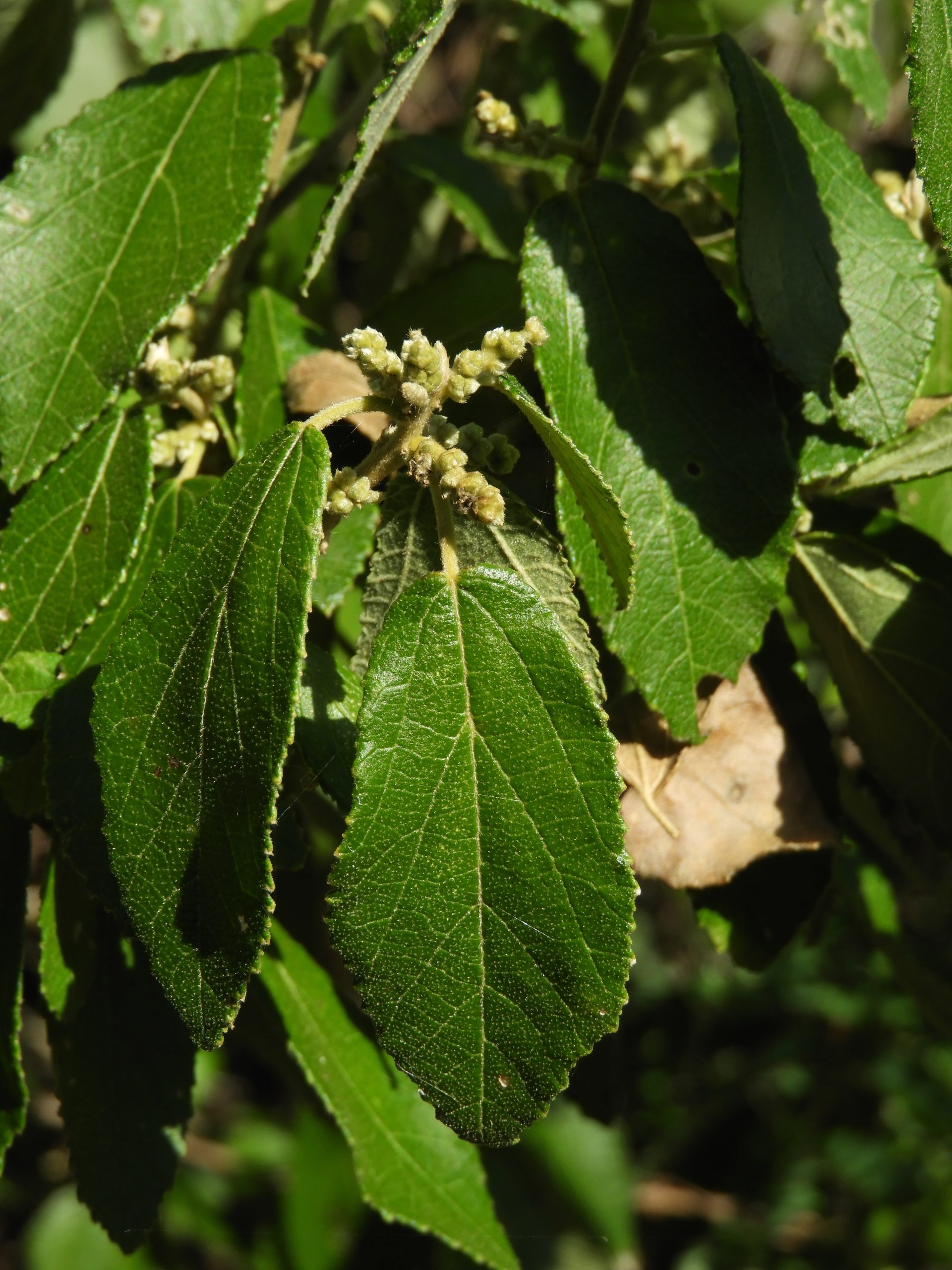Habit: Bernardia dichotoma grows as a shrub up to 3 m. in height. The leaves are arranged alternately, ovate to elliptic, to 10 cm long and 5 cm wide. The leaves have an acute leaf apex and a crenate/serrate margin.
Bernardia dichotoma is monoecious. The incomplete, imperfect, actinomorphic flowers are arranged in pubescent spikes (staminate) arising in leaf axils or solitary (carpellate). In staminate flowers the calyx has unfused, membranous sepals and numerous stamens. There is no corolla or carpel. Carpellate flowers have an unfused 5 -6 parted calyx, and no corolla or stamens. The ovary is superior and has 3 locules each with a single ovule. The fruit is a triangular capsule.
Habitat: Bernardia dichotoma grows in Dry Broadleaf Evergreen Formation – Forest/Shrublands (coppice).
Distribution: Bernardia dichotoma occurs throughout the central island groupings of the Lucayan Archipelago, the Greater Antilles, the Leeward Islands and Venezuela.
Medicinal/Cultural/Economic usage: Bernardia dichotoma is not known to be used medicinally in the Bahamian Archipelago.
